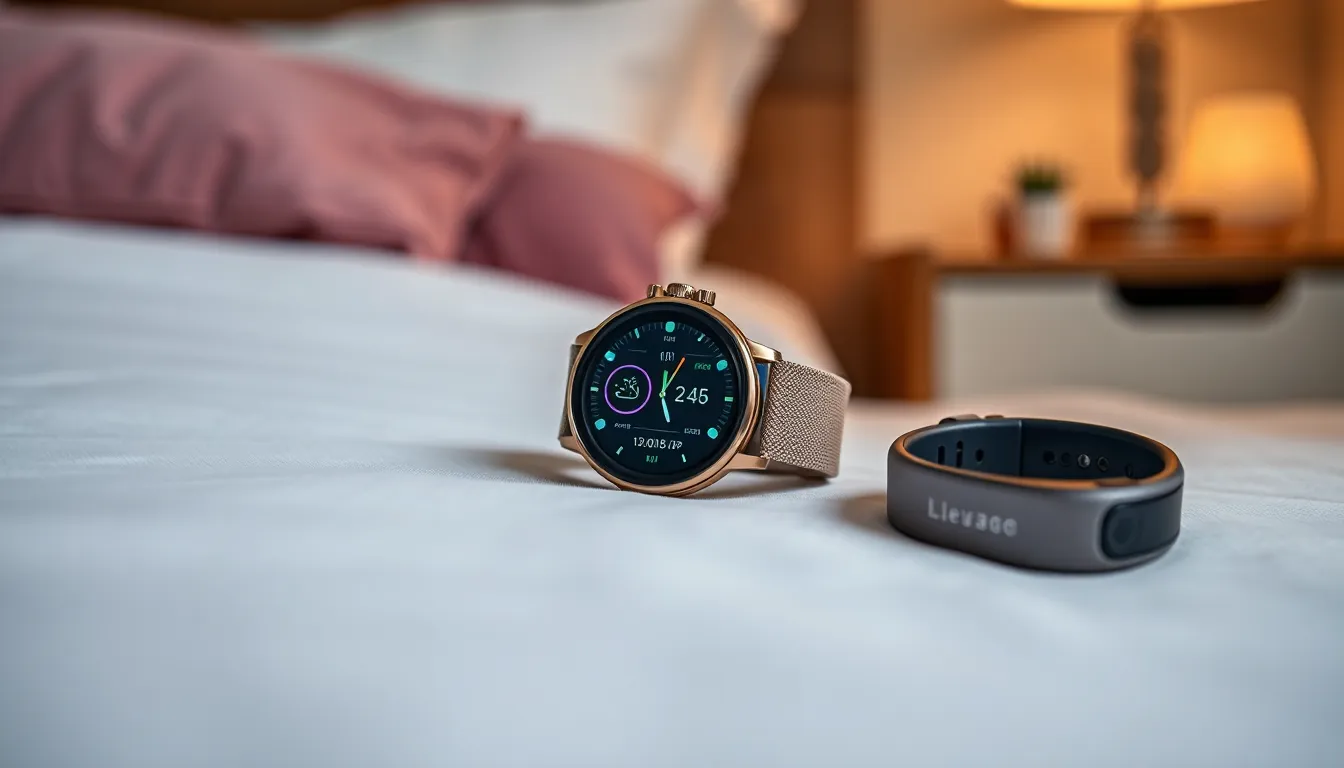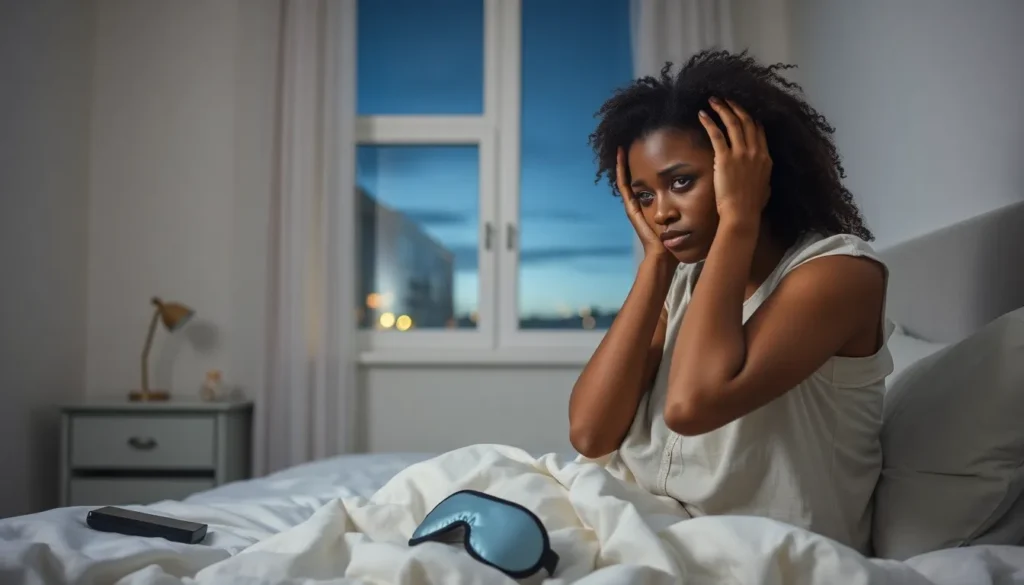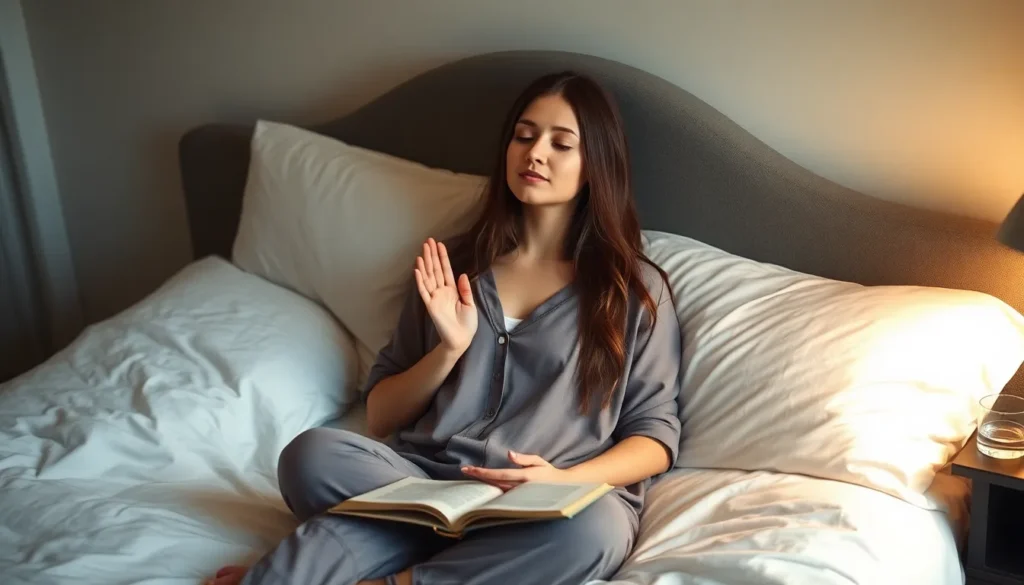In today’s fast-paced world, quality sleep often takes a backseat. With rising awareness about the importance of rest, sleep tracking devices have emerged as essential tools for those looking to improve their sleep quality. These innovative gadgets monitor various sleep metrics, providing insights that can transform nightly routines and overall health.
From smartwatches to dedicated sleep monitors, these devices offer a wealth of data, helping users understand their sleep patterns, duration, and quality. By analyzing this information, individuals can make informed adjustments to their habits, paving the way for more restful nights and energized days. As technology continues to evolve, the potential for these devices to enhance sleep hygiene is more promising than ever.
Table of Contents
ToggleOverview of Sleep Tracking Devices
Sleep tracking devices monitor and analyze sleep patterns, duration, and quality. These gadgets range from smartwatches and fitness bands to dedicated sleep monitors. Each type serves a unique purpose, offering distinct features designed to enhance users’ understanding of their sleep.
Types of Sleep Tracking Devices
- Smartwatches: Wearable technology that tracks heart rate, movements, and sleep stages. Examples include the Apple Watch and Fitbit.
- Fitness Bands: Lightweight devices focused on activity tracking and sleep monitoring. Popular options are the Xiaomi Mi Band and Garmin Vivosmart.
- Dedicated Sleep Monitors: Non-wearable devices placed on mattresses or beside beds, like the Sleep Number SleepIQ and Withings Sleep.
Features of Sleep Tracking Devices
- Sleep Stage Analysis: Identifies light, deep, and REM sleep phases. This information helps users assess their sleep quality.
- Sleep Duration Tracking: Records total hours asleep and time spent awake during the night. Users gain insights into their sleep needs.
- Heart Rate Monitoring: Measures resting heart rates during sleep, providing health data that can indicate potential sleep disturbances.
- Environmental Monitoring: Evaluates room conditions, such as temperature and noise levels, to optimize the sleep environment.
Benefits of Sleep Tracking Devices
- Improved Sleep Quality: Data-driven insights foster better sleep hygiene and habits.
- Personalized Recommendations: Users receive tailored advice based on sleep patterns, helping them make informed lifestyle changes.
- Health Awareness: Continuous tracking can alert users to changes in sleep patterns indicative of health issues.
Limitations of Sleep Tracking Devices
- Accuracy Variability: Not all devices provide consistent data. Some may underestimate or overestimate sleep quality.
- Dependency on Technology: Over-reliance on these devices can lead to anxiety about sleep, negatively impacting overall rest.
- Data Privacy Concerns: Users should consider how their data is stored and used by device manufacturers.
Sleep tracking devices offer valuable tools for understanding and improving sleep patterns. Their versatility and technological advancements provide numerous opportunities for enhancing sleep hygiene and overall well-being.
Types of Sleep Tracking Devices

Sleep tracking devices can be categorized mainly into wearable and non-wearable types, each designed to monitor sleep patterns in various ways.
Wearable Devices
Wearable devices include smartwatches and fitness bands that monitor sleep through movement and heart rate. These gadgets often feature built-in sensors that track sleep duration, sleep stages, and even sleep quality. Many wearable devices sync with mobile applications to provide users with insights and trends based on their nightly sleep patterns. Popular examples include:
- Smartwatches: Devices like the Apple Watch and Fitbit offer comprehensive sleep tracking features alongside health monitoring, allowing users to analyze their sleep in correlation with other health metrics.
- Fitness Bands: Bands such as the Xiaomi Mi Band and Garmin Vivosmart focus predominantly on tracking fitness and sleep, often providing a cost-effective solution for users seeking basic sleep data.
- Dedicated Trackers: Products like the Whoop Strap 3.0 specialize in recovery and sleep tracking, providing detailed analysis tailored for athletes.
Non-Wearable Devices
Non-wearable devices typically integrate into the sleep environment to assess sleep quality without being worn. These devices offer a different approach by utilizing sensors and technology placed in the bedroom. Common types include:
- Smart Mattresses: Mattresses from brands like Sleep Number come with built-in sensors that track sleep metric data, adjust firmness, and regulate temperature for optimal comfort.
- Sleep Monitors: Devices like the Withings Sleep Tracking Pad slide under the mattress to measure heart rate and movement, providing a non-intrusive method to track sleep.
- Sleep Trackers: Standalone devices, such as the Beddit Sleep Monitor, focus solely on sleep analysis, often featuring a smartphone app for easy data review.
Each type of sleep tracking device offers unique features that cater to different user preferences and needs, enhancing the overall sleep experience.
Features to Consider
Selecting the right sleep tracking device hinges on various essential features. Understanding accuracy, reliability, and additional health metrics enhances the decision-making process.
Accuracy and Reliability
Accuracy and reliability serve as critical factors when evaluating sleep tracking devices. Devices should demonstrate precise sleep stage identification, as this impacts insights into rest patterns. A combination of movement, heart rate variability, and respiratory rates often influences accurate assessments. Devices backed by peer-reviewed studies, such as the Oura Ring and Fitbit, provide users with insights generated from validated algorithms. Users benefit from consistent data over time, enabling better interpretation of sleep quality trends.
Additional Health Metrics
Monitoring additional health metrics extends the benefits of sleep tracking devices beyond sleep quality. Key metrics to consider include heart rate variability, respiratory rate, and sleep disruptions. Heart rate variability provides insights into stress levels and overall health, while respiratory rate tracks potential sleep apnea indications. Some devices also monitor ambient conditions, such as temperature and light, contributing data on sleep environment impact. Access to comprehensive health data allows users to develop personalized wellness strategies for improved overall health and sleep hygiene.
Popular Sleep Tracking Devices
Various sleep tracking devices offer unique features and functionalities that enhance sleep quality. Here are two notable options.
Device 1 Review
Oura Ring
The Oura Ring stands out for its sleek design and advanced tracking capabilities. It accurately monitors sleep stages, heart rate, and body temperature. The ring uses infrared sensors to capture data, providing insights into sleep quality and duration. Users appreciate its long battery life, lasting up to seven days on a single charge. Integrated mobile app features include personalized sleep insights and wellness scores, aiding users in optimizing their sleep habits.
Device 2 Review
Fitbit Charge 5
The Fitbit Charge 5 combines fitness tracking with sleep monitoring in a compact design. It offers detailed analysis of sleep stages and overall sleep metrics, including total sleep time and sleep consistency. Equipped with a built-in heart rate monitor, it tracks variations during sleep. Users benefit from the Daily Readiness Score feature, indicating when to optimize sleep versus when to engage in vigorous activities. The large display and user-friendly app enhance accessibility, making it a popular choice among health-conscious individuals.
Benefits of Using Sleep Tracking Devices
Using sleep tracking devices offers several distinct benefits that contribute to improved sleep quality and overall health.
- Improved Sleep Quality: Tracking devices provide insights into sleep patterns, helping users identify disruptions. Recognizing these disturbances can lead to actionable changes that promote deeper and more restorative sleep.
- Personalized Recommendations: Many devices use collected data to generate tailored advice on sleep hygiene. Examples include suggestions for optimal bedtime, relaxation techniques, or environmental adjustments to enhance the sleep environment.
- Increased Health Awareness: Regular monitoring fosters a greater understanding of overall health. Users can connect sleep metrics with other health indicators, such as heart rate and stress levels, enabling more informed lifestyle choices.
- Behavior Modification: Sleep tracking encourages users to adopt healthier sleep habits. By visualizing data, individuals may feel motivated to prioritize sleep, establish routines, and limit activities that negatively impact sleep quality.
- Goal Setting: Users can set and track specific sleep goals. Quantifying progress toward these targets helps maintain motivation and accountability, driving continuous improvement in sleep health.
- Enhanced Sleep Environment: Certain devices assess environmental factors, such as temperature and noise levels, impacting sleep quality. Adjusting these elements based on insights can lead to more restful nights.
- Stress Reduction: Understanding sleep patterns can reduce anxiety related to sleeplessness. Users gain reassurance from tracking their progress and receiving feedback on sleep quality, contributing to a more relaxed mindset.
Incorporating sleep tracking devices into one’s routine yields tangible benefits, supporting users in their journey towards achieving better sleep and overall wellness.
Sleep tracking devices are transforming how individuals approach their sleep health. By providing detailed insights into sleep patterns and quality, these tools empower users to make informed changes to their routines. Whether opting for a sleek smartwatch or a sophisticated sleep monitor, the right device can enhance sleep hygiene and overall wellness.
As technology continues to evolve, the potential for these devices to offer even more personalized recommendations and accurate data grows. Users who embrace sleep tracking can expect not only improved sleep quality but also a greater awareness of their health. Investing in a sleep tracking device may just be the key to unlocking better rest and rejuvenation.









